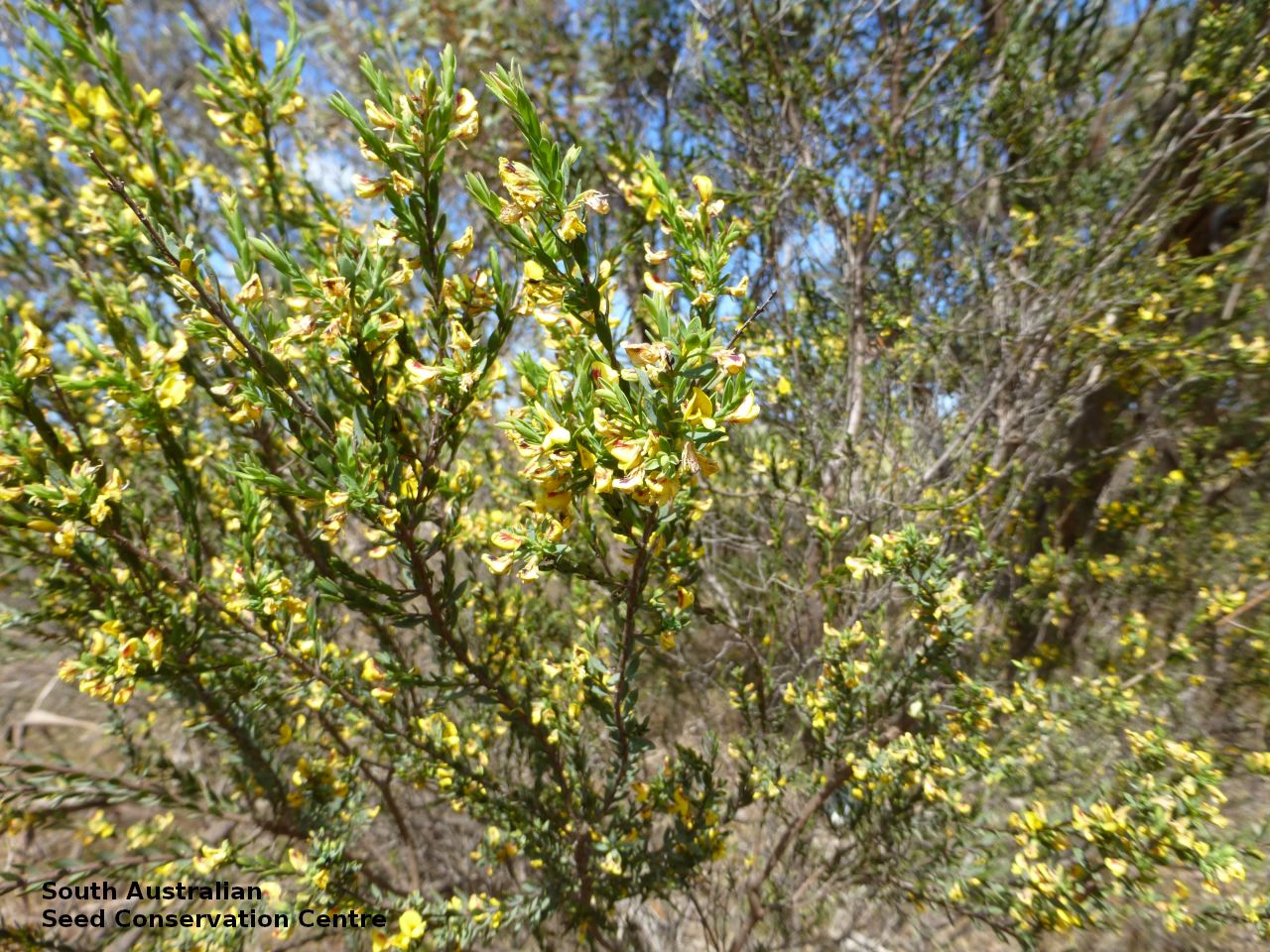
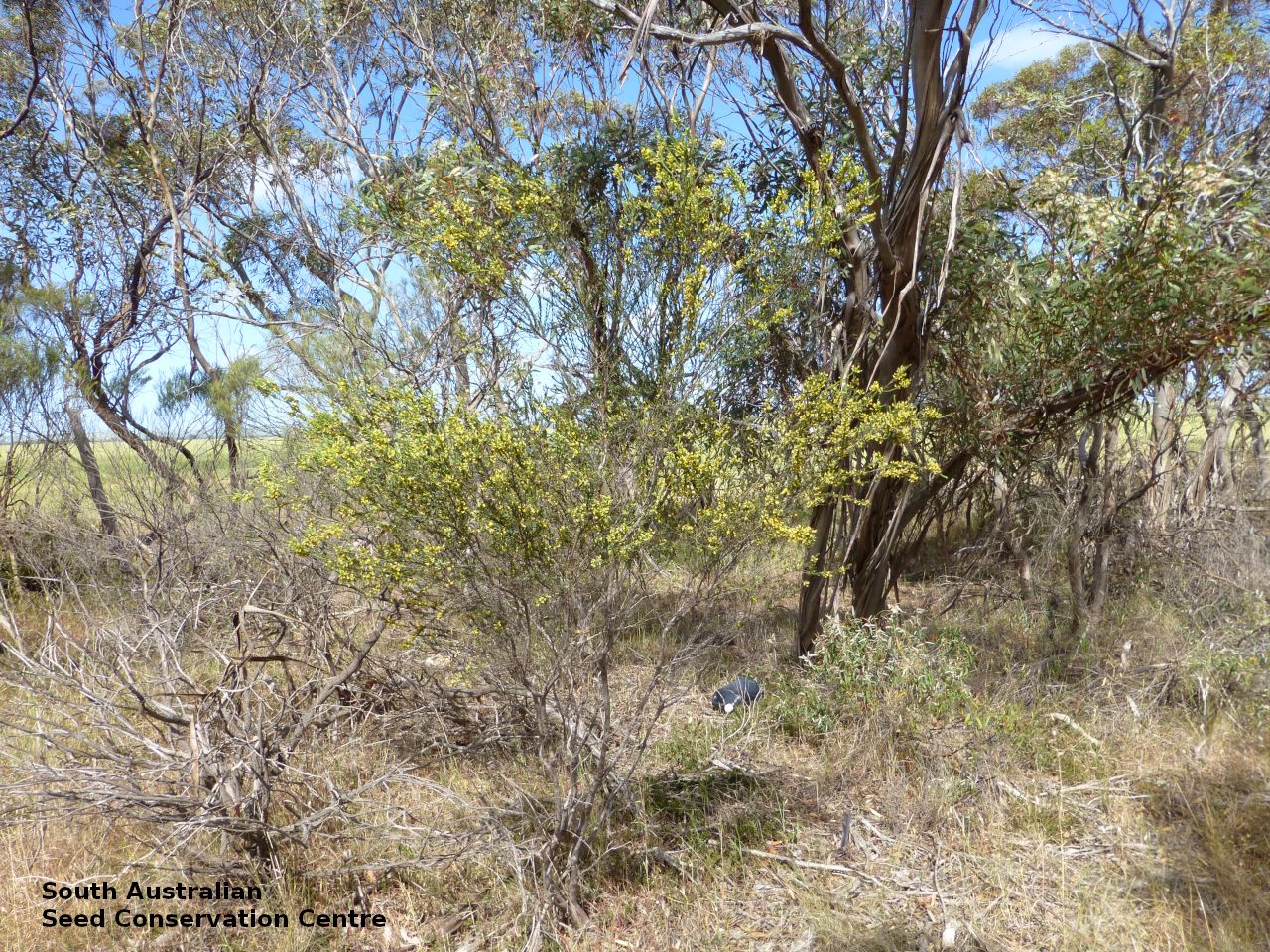

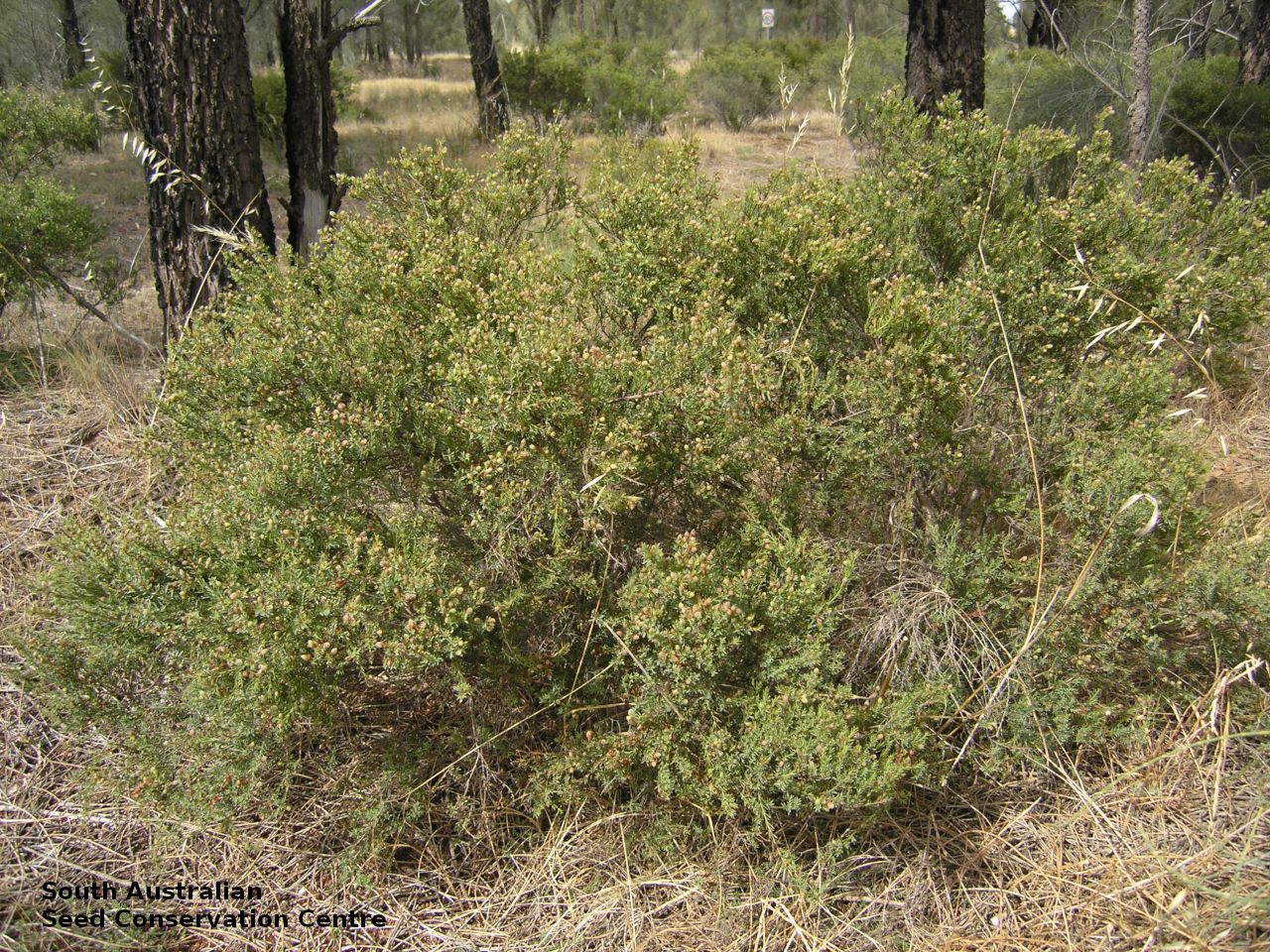




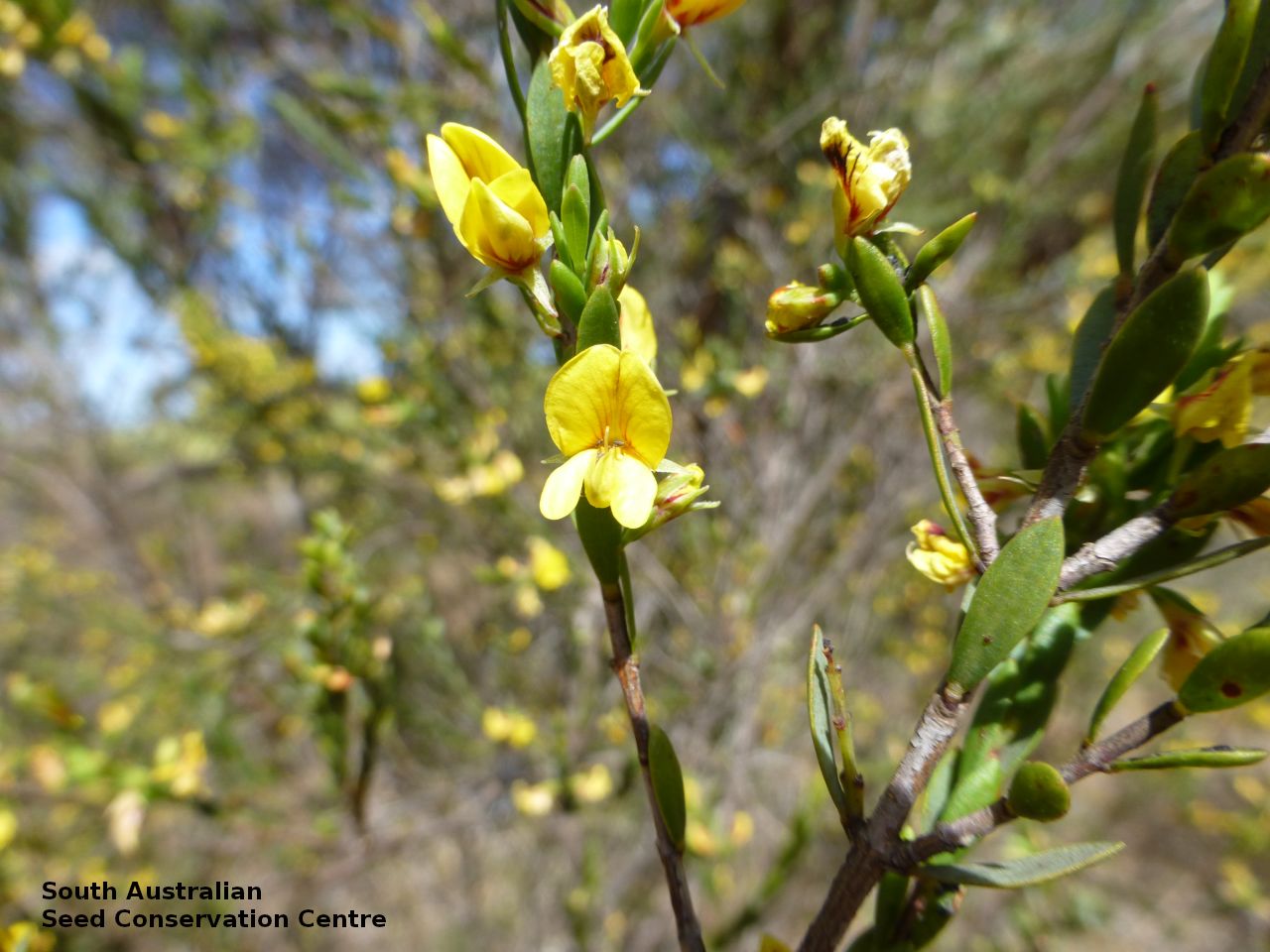
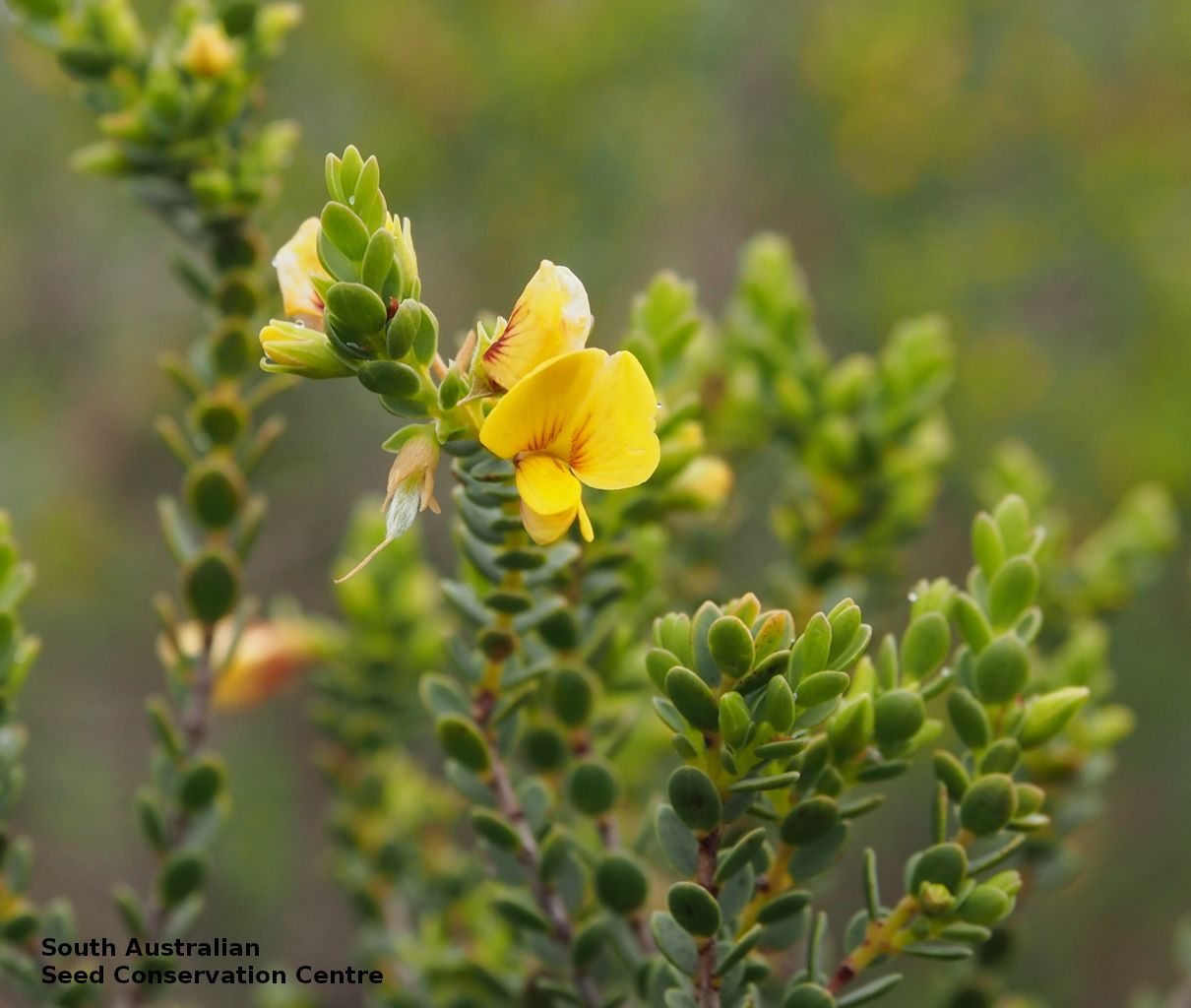



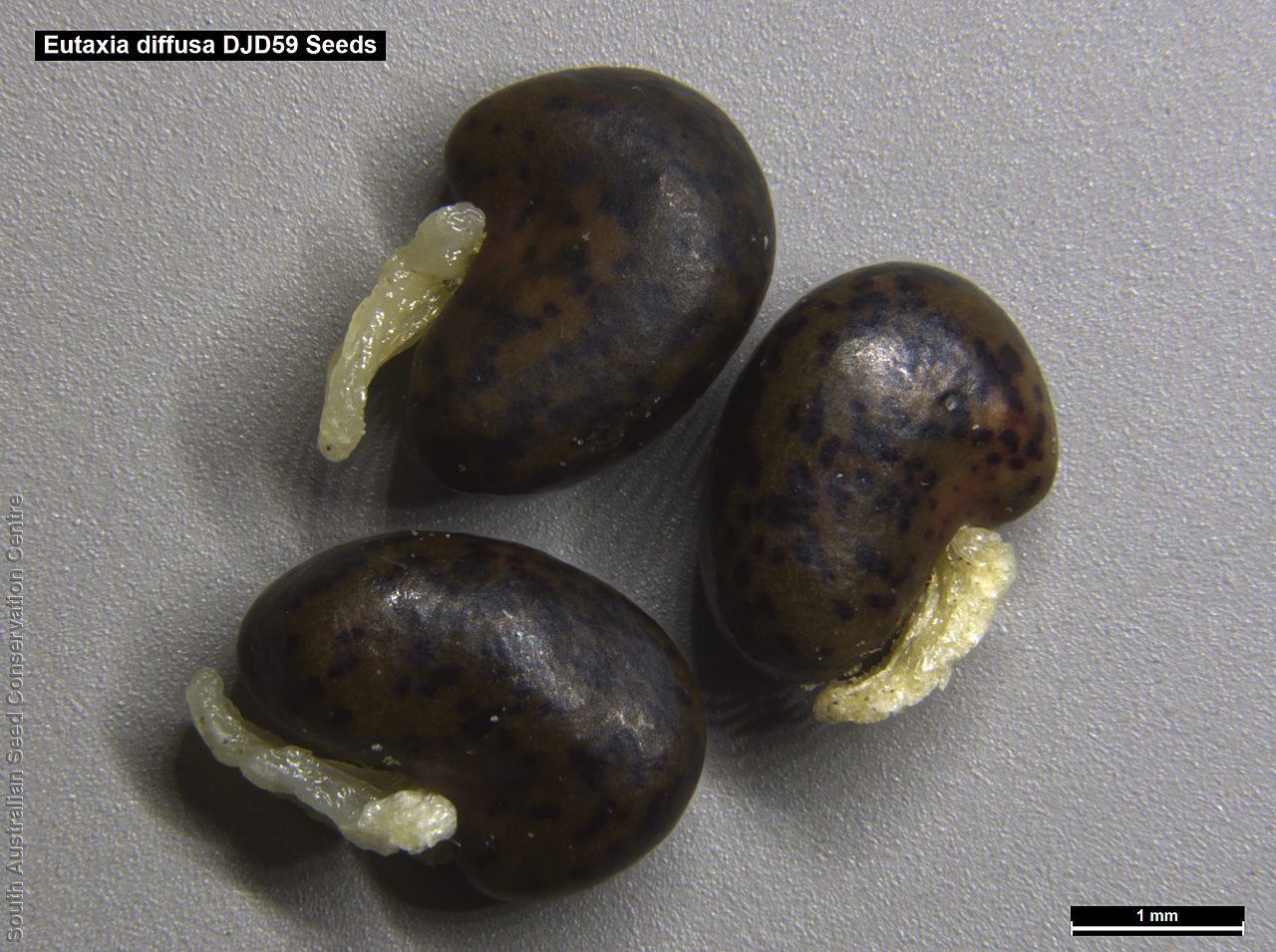

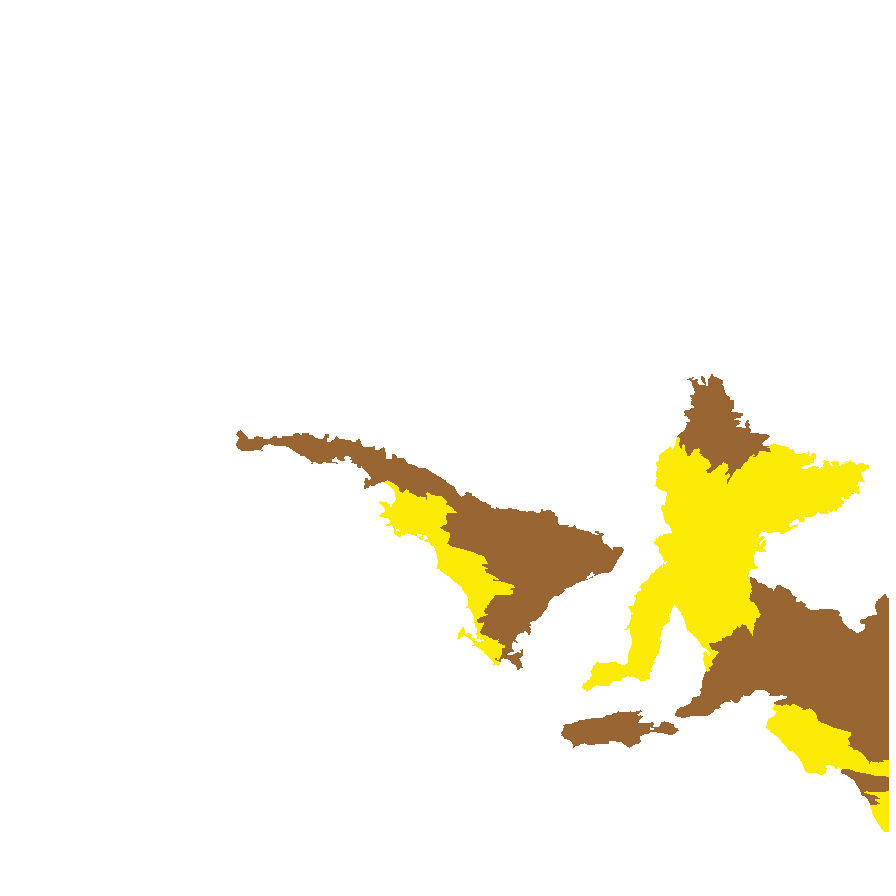
Botanical art
Prior names
Eutaxia microphylla var. diffusa
Common names
Spreading Eutaxia
Large-leaf Eutaxia
Etymology
Eutaxia from the Greek 'eu' meaning well and 'taxis' meaning arrangement in row, referring to the regular arrangement of leaves. Diffusa from Latin meaning to spread out or wide, alluding to either its spreading habit or relatively uncrowded leaves.
Distribution and status
Found on the southern Eyre Peninsula, Flinders Ranges, Yorke Peninsula, Mount Lofty Ranges, Kangaroo Island and the upper South-east in South Australia growing in mallee communities. Also found in Queensland, New South Wales and Victoria. Native. Common in South Australia. Common in all States.
Herbarium regions: Flinders Ranges, Eastern, Eyre Peninsula, Northern Lofty, Murray, Yorke Peninsula, Southern Lofty, Kangaroo Island, South Eastern, Green Adelaide
NRM regions: Adelaide and Mount Lofty Ranges, Eyre Peninsula, Kangaroo Island, Northern and Yorke, South Australian Arid Lands, South Australian Murray-Darling Basin, South East
AVH map: SA distribution map (external link)
Plant description
Variable shrub, often low, dense and intricate, or erect with stems usually glabrous, with smaller ones often spinescent. Leaves opposite, obovate to ovate or rhombic to 7 mm long and 3 mm wide; apex subacute, concave, keeled, usually glabrous. Flowers to 6 mm long, solitary, or rarely paired; yellow, lacking obvious red veins, with purple keel. Flowering between August and November. Fruits are brown pod to 5 mm long, very swollen with a long stripe. Seeds are brown mottled reniform seed to 2.5 mm long and 2 mm wide, dull, with a long aril. Seed embryo type is bent.
Seed collection and propagation
Collect seeds between November and January. Collect maturing pods, those brown or turning brown and contain hard black seeds inside. Place the pods in a paper bag and leave to dry for one to two weeks. Then rub the pods with a rubber bung to dislodge the seeds. Use a sieve to separate the unwanted material. Store the seeds with a desiccant such as dried silica beads or dry rice, in an air tight container in a cool and dry place. From one collection, the seed viability was high, at 95%. This species has physical dormancy that needs to be overcome for the seed to germinate. The seed coat needs to be ruptured so that water can enter the seed before germination can occur. Methods to rupture the seed coat include scarification with sand paper or nicking the seed coat with a sharp blade or hot water treatment by immersion in boiling water.
| Location | No. of seeds (weight grams) | Number of plants | Date collected | Collection number Collection location | Date stored | % Viability | Storage temperature |
|---|---|---|---|---|---|---|---|
| BGA MSB | 3,000 (10.8 g) 3,000 (10.8 g) | 60 | 2-Dec-2004 | DJD59 South Eastern | 31-Mar-2006 | 95% | -18°C |
| BGA | 18,458 (71.206 g) | 20+ | 28-Nov-2022 | BKB136 Southern Lofty | 20-Jun-2023 | 100% | -18°C, -80°C |
| BGA | 680 (3.621 g) | 20+ | 5-Dec-2022 | TST1504 Southern Lofty | 20-Jun-2023 | 70% | -18°C |
Number of plants: This is the number of plants from which the seeds were collected.
Collection location: The Herbarium of South Australia's region name.
% Viability: Percentage of filled healthy seeds determined by a cut test or x-ray.